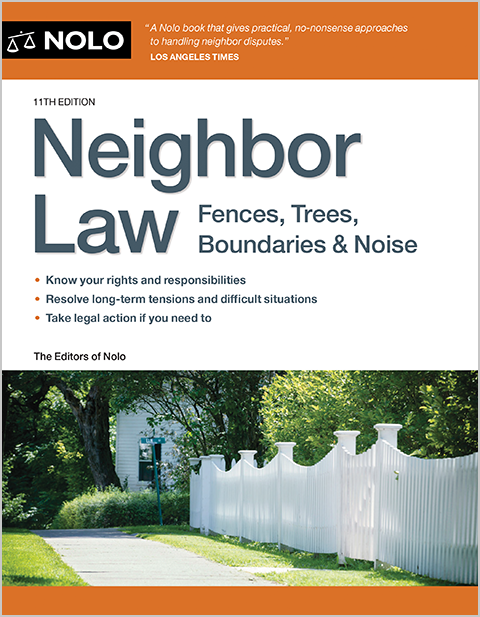Contrary to popular belief, most homeowners do not have a right to their view.
Homeowners ordinarily have no right to a view (or light or air), unless it has been granted in writing by a local ordinance or subdivision rule. The exception is that someone may not deliberately and maliciously block another's view with a structure that has no reasonable use to the owner. Let's take a closer look at:
- the possibility that view-specific local ordinances apply to property you own or are considering buying
- related ordinances to check into
- the possibility that subdivisions rules also apply
- how to speak to a neighbor who is blocking your view, and
- what further research to conduct before buying a property with a view.
Researching Rules Affecting Homeowners' Views
You will likely have to look into more than one set of rules to see if any of them offer you protection for your property's view.
Municipal Ordinances Protecting Homeowner Views
A few cities in the United States, most commonly ones that overlook the ocean or other desirable vistas, have adopted view ordinances. These laws typically protect property owners from having their view obstructed by growing trees. They don't cover buildings or other structures that block views.
The ordinances usually allow someone who has lost a view to sue the tree owner for a court order requiring them to restore the view. A neighbor who wants to sue must first approach the tree owner and request that the tree be cut back. The complaining person usually bears the cost of trimming or topping, unless the tree was planted after the law became effective or the owner refuses to cooperate.
Some view ordinances contain extensive limitations that leave them basically toothless. Some examples:
- Certain species of trees might be exempt, especially if they grew naturally.
- A neighbor might be allowed to complain only if the tree is within a certain distance from their property.
- Trees on city property might be exempt.
Get in touch with your city government to find out more.
Other Ordinances Might Indirectly Govern Homeowners' Views
If, like most, your city doesn't have a view ordinance, other local laws might nevertheless be relevant:
Fence height limits. If a fence is blocking a homeowner's view, it might be in violation of a local law. Commonly, local laws limit constructed fences in back yards to six feet high and in front yards to three or four feet. Height restrictions might also apply to natural fences, such as hedges. For more information, see Nolo's Fences and Neighbors FAQ.
Tree laws. Certain species of trees might be prohibited from being grown—for example, trees that cause allergies or tend to harm other plants. Local laws might also forbid trees that are too close to a street (especially an intersection), to power lines, or even to an airport. For more information, see Nolo's Tree Disputes With Neighbors FAQ.
Zoning laws. Local zoning or planning regulations normally control the size, location, and uses of buildings. In a single-family area, buildings are usually limited to 30 or 35 feet high. Zoning laws also usually require a certain "setback," or distance between a structure and the boundary lines. They also limit how much of a lot can be occupied by a structure. For instance, many suburban cities limit a dwelling to 40% to 60% of the property.
Subdivision Rules Concerning Homeowners' Views
Often, residents of subdivisions and planned unit developments are subject to a detailed set of rules called covenants, conditions, and restrictions (CC&Rs). These regulate most matters that could concern a neighbor, including trees and views.
For example, a homeowner's association (HOA) rule might state that trees can't obstruct the view from another lot, or simply limit tree height to 15 feet. If someone violates the restrictions, the homeowners' association might apply pressure (for example, removing the privilege of using a swimming pool) or even sue. A lawsuit is costly and time-consuming, however, and the association might not want to sue except for serious violations of the rules.
How to Approach a Neighbor About a View Problem
Before you approach the owner of a tree that has grown to block your view, answer these questions:
- What is the least destructive action that could be taken to restore your view? Maybe the owner will agree to limited and careful pruning.
- How much will it cost to trim the tree(s)? Be ready to pay for it.
- Which part of the tree is causing view problems for you—one limb, the top, one side of it?
- Does the tree affect the view of other neighbors? If it does, get them to approach the tree owner with you. Trimming costs could be divided among you.
Before You Pay for a Property With a View
Properties with beautiful views tend to command higher purchase prices than similar places without, so you don't want to overpay if your view will potentially disappear.
First, ask the property owner or the city planning and zoning office if the property is protected by a view ordinance. Then check with the seller's real estate agent to see if neighbors are subject to restrictions that would protect your view. Also, if the property is in a planned unit development, find out whether a homeowners' association actively enforces the restrictions.
Check local zoning laws for any property that might affect you. Could the neighbor down the hill add a second-story addition?
Finally, look carefully from the property to see which trees might later obstruct your view. Then go introduce yourself to their owners and explain your concerns. A neighbor who also has a view will probably understand your concern. If someone is unfriendly and uncooperative, you stand warned.
Next Steps
For more information on your rights and taking a neighbor to small claims court, see Neighbor Law: Fences, Trees, Boundaries & Noise, by the editors of Nolo.
Talk to a Lawyer
Need a lawyer? Start here.
How it Works
- Briefly tell us about your case
- Provide your contact information
- Choose attorneys to contact you
- Briefly tell us about your case
- Provide your contact information
- Choose attorneys to contact you


